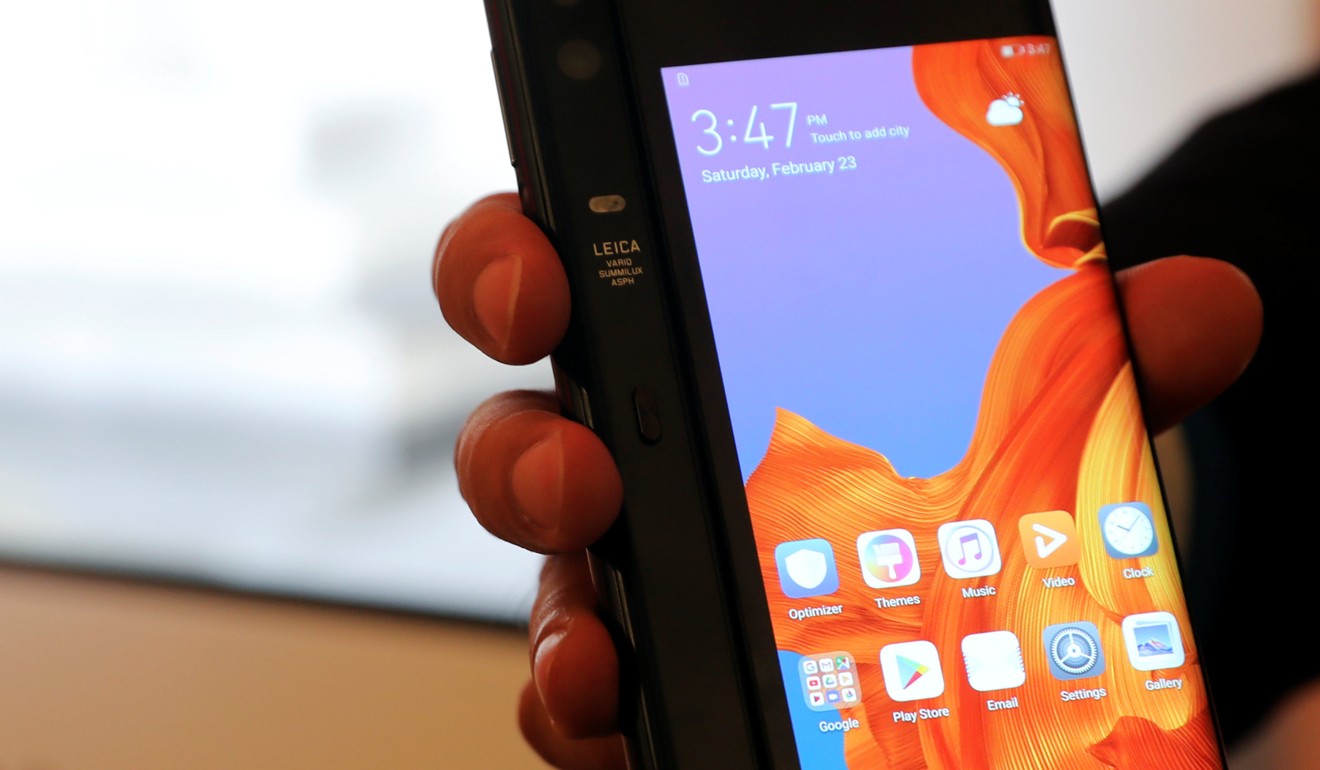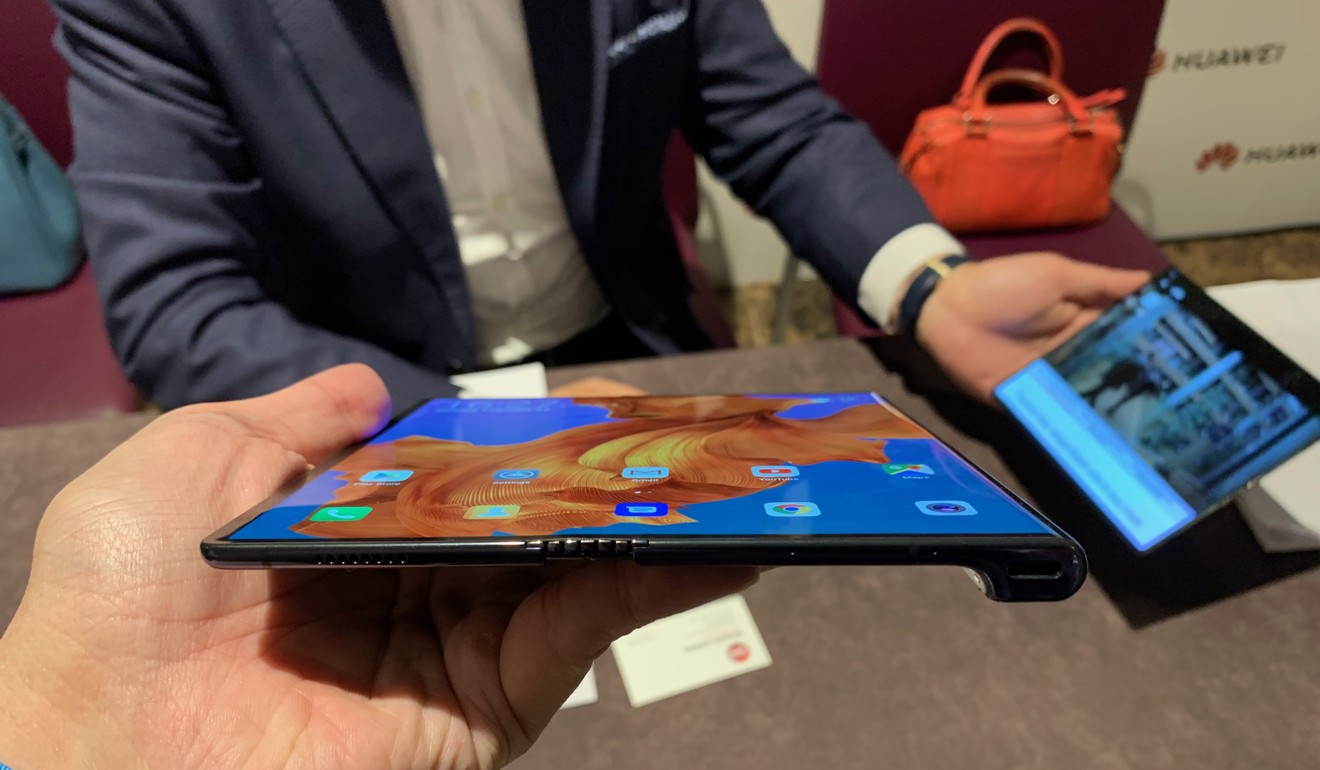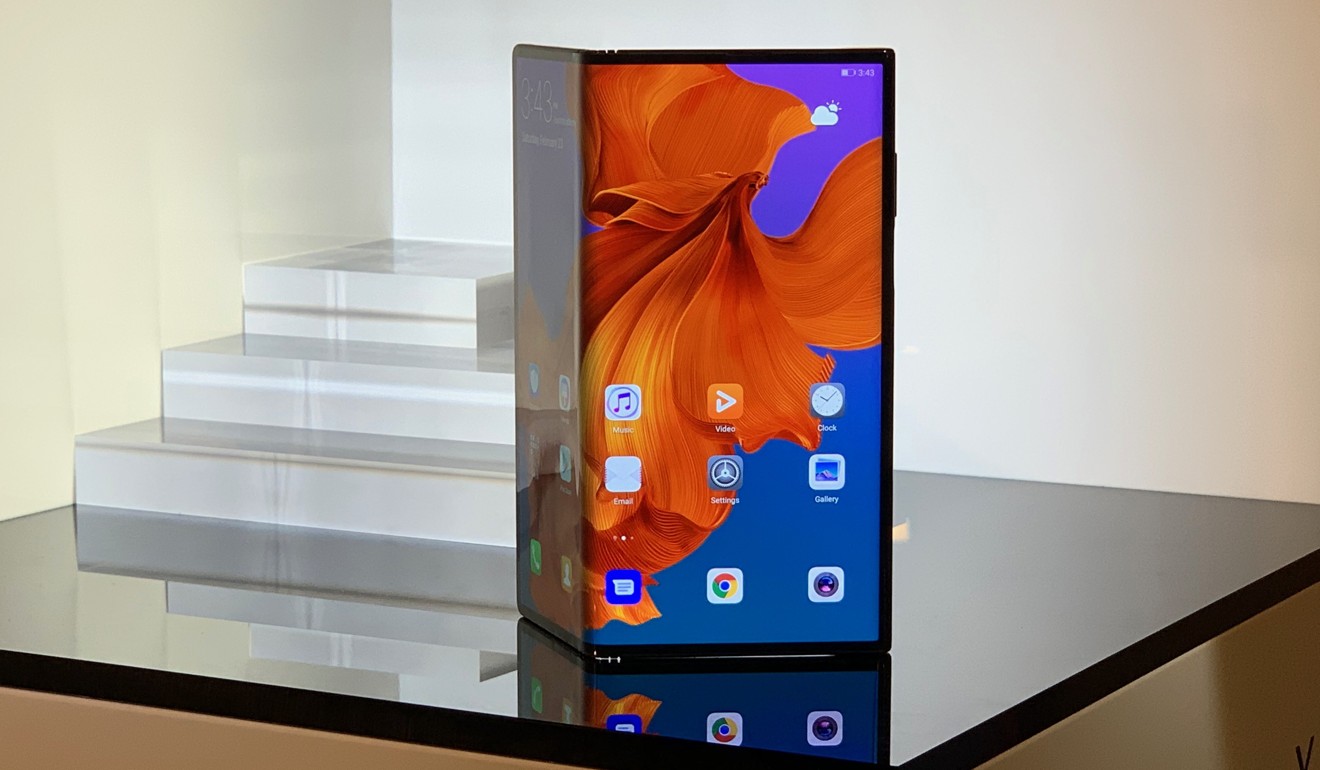
Huawei Mate X first look: foldable phone outshines rival Samsung handset in almost every way
- 5G-ready Mate X with back-to-back, almost edge-to-edge screens that fold out to 8 inches wide in tablet mode, is a jaw-dropping 5.4mm thick
- With good build quality and responsive software, handset goes on sale in China and Europe in June at a price of US$2,600
Ever since Huawei overtook Apple as the world’s second largest phone brand by market share late last year, the Chinese tech giant has been quite vocal – at least when represented by the company’s consumer business head, Richard Yu – about its mission to topple Samsung too. And to that end, Huawei has arguably one-upped the South Korean phone maker twice already in 2019.
The second blow came over the weekend in Barcelona ahead of the Mobile World Congress trade show, when Huawei unveiled its cutting-edge foldable phone that trumped the recently announced Samsung Galaxy Fold in terms of screen-to-body ratio and connectivity prowess.
Named the Mate X, Huawei’s foldable device has a single 8-inch OLED display that folds and bends at near the halfway point to become a smaller handset with screens on the front and back.

Whether in tablet or smartphone mode, the Mate X’s screen spans almost edge-to-edge with no interruption. Samsung’s Galaxy Fold, on the other hand, has a notch-like cut-out on its display when unfolded and giant bezels wrapping a small screen when folded.
Huawei’s Mate X is also 5G ready, while Samsung’s device isn’t.
But more convincingly, whereas Samsung wouldn’t let a single media member touch its foldable phone at its launch event in San Francisco – which implies the device isn’t quite ready for real world use; Huawei let a small group of journalists demo the Mate X, including this reporter.

After playing with the Mate X for a couple of minutes, I can say that my initial concerns about potential buggy software (which has to account for a display that is constantly changing sizes and orientation) and flimsy build are quelled.
The Mate X’s software was surprisingly responsive despite my folding and unfolding the unit several times, with the web browser immediately switching from full desktop mode in opened form to mobile view when folded.
Build quality, likewise, was impressive. The display did not show signs of creasing at the folding point, and at 5.4mm thick when opened up, is jaw-droppingly thin.
Despite its svelte build, Huawei still managed to cram two battery cells inside the Mate X for a total capacity of 4,500 mAh, and the company says the phone can charge at an industry-best 55W, which translates to an 85 per cent top-up in 30 minutes.

In terms of processor, the Mate X runs on Huawei’s Kirin 980 chip set, with the company’s new 5G modem, the Balong 5000. Huawei says the device can handle peak download speeds of 4.6Gbps, which if true would be twice as fast as Qualcomm’s Snapdragon X50 5G chip set that will be used in most 5G handsets this year.
Huawei did not talk about the device’s cameras much, but I’ve been told by sources that it is a quad camera system similar to that on the yet-to-be-unveiled Huawei P30.
Huawei has proven its camera prowess over the past year, and there’s no reason to think the Mate X’s system won’t rank among the best.

Of course, as a gen-one cutting-edge device, the Mate X is really expensive – Huawei says the Mate X will go on sale in China and Europe around June for a retail price of around US$2,600.
That’s a high price to pay for cutting-edge tech, but I’m sure there will be tech geeks queuing out the door to buy on day one, because the Mate X, along with Samsung’s Galaxy Fold, look to be the most futuristic gadget of 2019.

